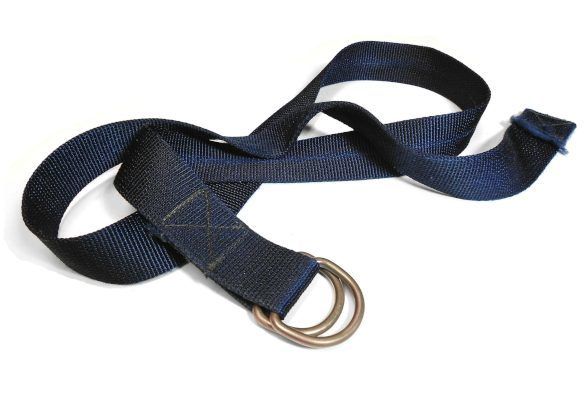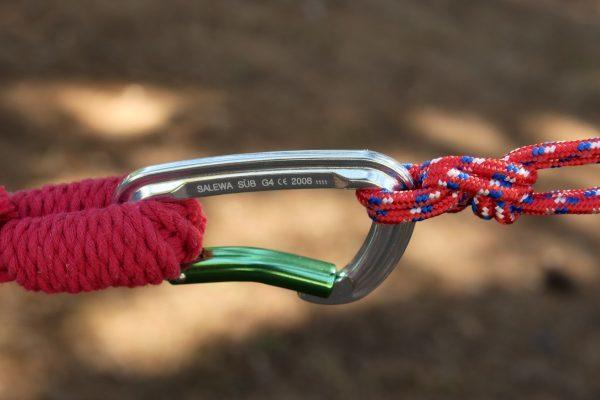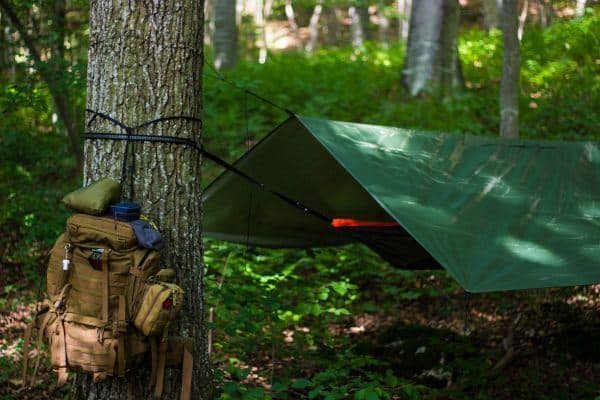To comfortably enjoy using a hammock outdoors, there are a few basic things to learn. One of the most important things to know is how to properly use hammock straps. But you might be wondering why you need to use these in the first place.

Simply put, hammock straps are the most efficient way to hang hammocks because they are a safe and reliable way to suspend your hammock.
Different hammocks brands may come with different types of straps, and each of them requires a certain skill or knowledge to use it correctly. You can also learn how to make and use your own hammock straps - which we’ll be talking about later in this article.
Learning how to use hammock straps properly will ensure that you have a comfortable and pleasant time in the wilderness with your hammock. In this guide, you’ll learn all about the different kinds of hammock straps and how to use them.
Table of Contents
Types of Hammock Straps
When buying a hammock, these are usually equipped with one of four types of hammock straps, which are also known as webbing. Though ropes were the original way to hang a hammock, they are notorious for leaving scars on trees and thus, aren’t the best way to hang hammocks.

Webbed straps are better because they are flat, giving them the ability to grip trees in a more efficient and secure way.
These are the short and long variants featuring two loops, as well as the eco-friendly and adjustable kinds.
Short straps: Hammocks with short straps mean that these are meant to be used as anchor points, so you’ll be needing something else to suspend the hammock.
Long straps: Hammock straps that are longer than two feet qualify as long straps. These are usually equipped with two loops, and you can use these for suspension.
Eco-friendly straps: Eco-friendly hammock straps are typically heavier than other variants. They are easily distinguished as they use two S-hooks, are two inches thick or more, and have metal rings. They are also made with environmentally-friendly materials.
Adjustable straps: Best for those that are new to hammocks, adjustable straps are equipped with numerous loops on one of its ends. These are also very easy to use.
If your hammock doesn’t come with straps, you’ll need to get your own. The most important thing to keep in mind is that the straps you buy should have good grips because this is essential for stabilizing and providing security at the anchor points.
Most straps in the market already come with several loops for easy attaching of the carabiner.
What Is A Carabiner?
Carabiners are an accessory that provides terrific support for hanging your hammock using straps. Put simply, carabiners are a metal loop equipped with a spring-loaded gate that is used to connect components, in this case, hammock straps.
Carabiners come in all types of shapes, sizes, and materials. When shopping for a carabiner, there are several things you need to look out for:

These small details all make a huge difference in how they are going to perform when using hammock straps.
Do-It-Yourself Hammock Straps
If you find that one of your straps may be lost or broken, you can make your own straps should you have some extra straps lying around. Just tie the extra strap into a loop that is at least three feet in length.

With this strap, you can already tie it around a tree, then tuck one end of it into the other. Next, attach a carabiner to the interior loop, then attach that carabiner onto your hammock.
Just keep in mind that DIY hammock straps can be risky. It’s always recommended to use new, secure straps at all times.
Preparing Your Straps for Use
- 1Choose the length of your hammock straps: The strap length for hanging your hammock will depend on how long your hammock is, as well as the distance between trees (or your anchor points). Getting to the right length will make all the difference between a hammock that is suspended perfectly or one that sags in an awkward manner.
- 2Tie your hammock straps: This involves several steps to ensure you get a good grip and knot. First, make a loop on each end of the strap, then tie a tight knot to secure it. On the loop side, insert a D-ring. Make sure that it’s wide enough for the strap width. Tie the straps around the tree following a clockwise movement, then insert the other end into the loop. Pull to the strap’s maximum length in order to securely lock it. Next, wrap the strap around the tree by going the other direction. Once you have used up the entire length of the strap, insert the end on the first loop which you used to make the strap firm then attach the carabiner. Repeat this process on the next tree to make the second loop.
- 3Adjust your hammock: Now that you are done tying the straps around the trees, it’s now time to hang your hammock.
Hanging Your Hammock with Hammock Straps
Once you’ve learned how to use hammock straps, the next task is to choose the right location.

Since you’ll be in the outdoors, your hammock will be suspended between two trees as your anchor points. But given that you’re in the wilderness, it will be challenging to predict the available distance between trees, but here’s a guide that can help you.
To put it simply, your hammock should be right in the center of two trees. The strap length on each end of the hammock, as well as their distance from the trees, should also be equal.
- 1Tree spacing and size: If you suspend your hammocks on trees that are too small, the trees may end up bending because of your weight. You also won’t be able to work with trees that are too far apart because your hammock suspension straps may not reach them, or the hammock ends up benign too taut.
- 2Add 4-6 feet to the length of your hammock: Seasoned hammock lovers know that the trick to finding the right trees is adding anywhere from 4 to 6 feet to the length of their hammock. This is the correct distance between trees for hanging your hammock.
- 3Long-distance trees: If all you have are trees spaced too far from each other, such as 30 or 40 feet in length, you can still make use of it as long as your hammock straps are of the right length.
- 4Avoid trees that have dead branches or are unhealthy: Aside from causing harm to the tree, you could end up hurting yourself if you hang a hammock from an unhealthy tree. One of its limbs may end up falling on you while you sleep; this would be a rude awakening.
- 5Don’t attach more than one hammock on a tree: Sure, camping is fun when you’re with your friends, but that doesn’t mean you should be hanging your hammocks from the same tree. Each person should hang their hammock on a different tree. This will make sleeping on your hammock safer, injury-free, and will reduce the impact on the environment.
Safety Considerations
Using hammocks are relaxing, but keep in mind that there are some safety considerations you should be aware of to ensure an injury-free time at the woods.

- 1Don’t leave straps on the ground. If you’ve already gotten your hammock to its proper positioning, loose ends if any should be tied around hanging straps.
- 2Never hang your hammock too high: The ideal height your hammock should be hung from the ground is around a foot and a half. Though it isn’t much to roll out of your hammock, if any knots are not tied properly can mean that you’ll be falling onto the ground unexpectedly. For this reason, you want to make sure that the fall will be short.
- 3Double-check every single knot before you relax on your hammock.
- 4Use equipment that is renowned for safety. If you will be using carabiners, get those that can be used for at least 500 pounds to be completely sure.
- 5Check the condition of your hammock straps before using them. Simply inspect them after every use. The most important aspect to check is the stitching that holds the loops together.
- 6Gradually transition your weight onto your hammock to check if it’s secure before laying down.
Frequently Asked Questions
What if I want to use my hammock indoors?
You can follow the same techniques, and it would also be much easier to do because you won’t be needing as much hardware or knots. Just keep in mind that instead of trees, you’ll be placing pressure on the walls of your home.
To avoid damage to your home walls, be sure that you are anchoring your hammock to the right support.

Conclusion
Learning to tie knots and using hammock straps requires practice. Be patient: the good news is that this will give you more reason to spend time in the outdoors and relax on your hammock. Be sure to practice safety at all times; hammock straps are inexpensive so replace your gear whenever they have already been worn down.
In no time, you’ll have mastered the art of using hammock straps. Enjoy!
